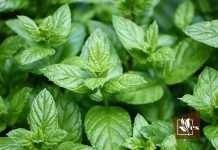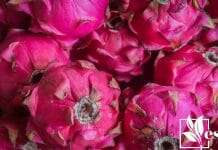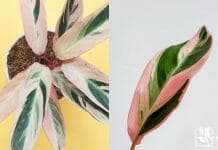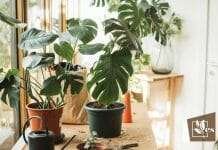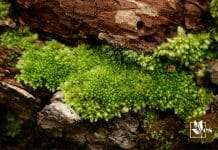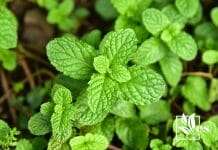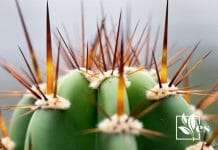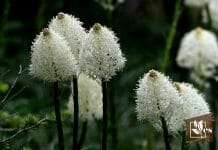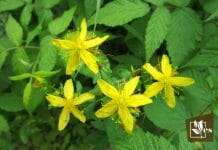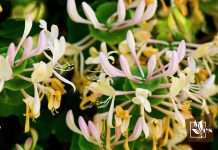Plants that look like banana trees may be cultivated both indoors and outdoors. However, there are many plants that resemble banana plants of the genus Musa, and they may be different types of banana plants or totally different species.
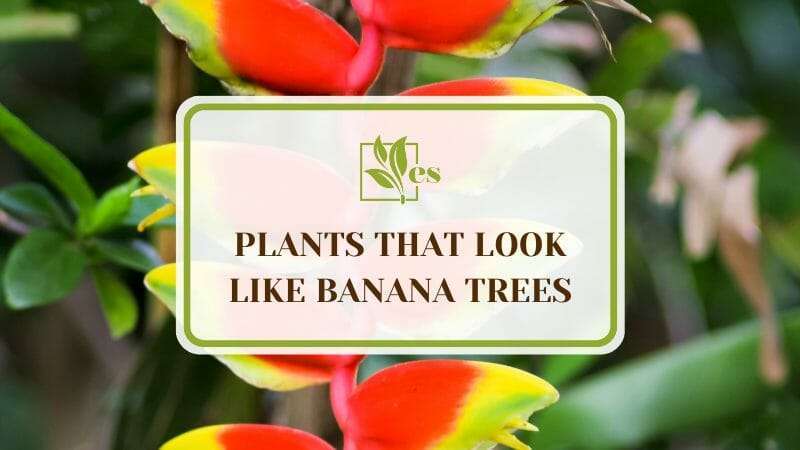
Whatever it is, if you are having difficulty finding such plants, look no further. Because we have compiled a list of banana tree-lookalike plants in this post, which you can find in more detail below.
JUMP TO TOPIC
List of Plants That Look Like Banana Trees
1. Crane Flower Plant
The crane flower plant or Strelitzia Reginae is a tropical clumping plant endemic to South Africa.
– Features
It gets its big gray-green leaves from subterranean rhizomes, furthermore it is well recognized for its huge, unique inflorescence. The blooms of this plant emerge from the stems one at a time, with three beautiful orange calyx and three pale blue petals. Not only that, but it blooms in spurts throughout the year.
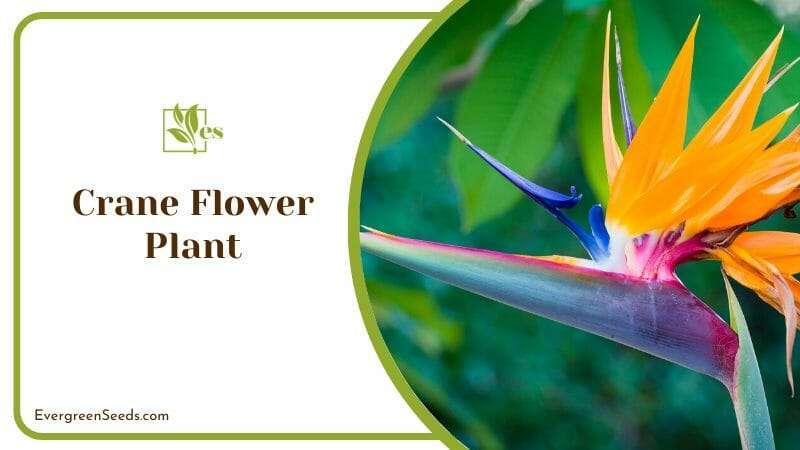
– Growth Requirements
You can grow it indoors in a bright, sunny location with healthy, loamy, well-drained soil. Remember to water and fertilize this plant liberally in the spring and summer, but keep them dry in the winter.
At night, this plant requires temperatures ranging from fifty-five to sixty-five degrees Fahrenheit. When the temperature outdoors rises over seventy degrees Fahrenheit, you should move your plant to a sunny to semi-shaded spot with sufficient air circulation, for the best result of the growth.
2. Hanging Lobster Claw
Heliconia Rostrata, also referred to as the Hanging Lobster Claws, are perennial herb native to Peru, El Salvador, Colombia, Costa Rica, Venezuela, Ecuador, and Bolivia that has been naturally grown in Puerto Rico. Other types of Heliconias grow erect, with cup-shaped flower bracts that hold water for insects and birds.
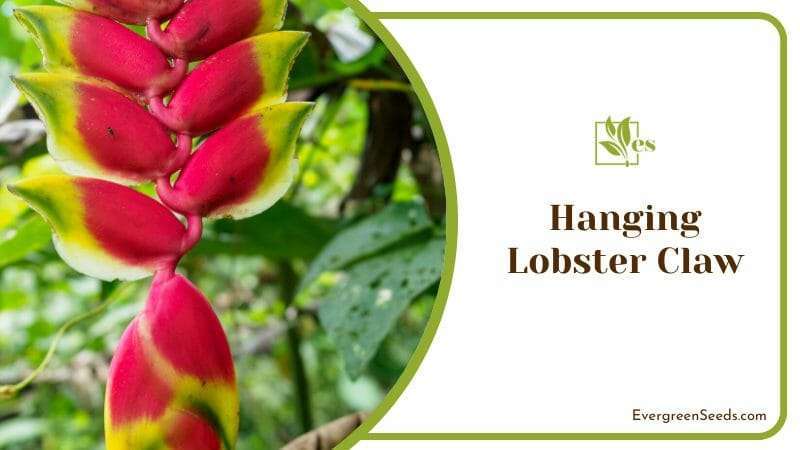
– Features
This plant, on the other hand, has blossoms that face downward, offering nectar to birds. Hanging Lobster Claws are well-known among gardeners as a host flower for many birds, including hummingbirds. It is frequently employed as a specimen in tropical gardens due to its distinct qualities. It is also Bolivia’s national flower and comes in green, yellow, and pink hues.
Growing up to seven feet tall inside, it forms an eye-catching corner plant with paddle-like leaves akin to a Banana tree.
3. Metallica Palm Tree
The Metallica Palm Tree, scientifically known as Chamaedorea Metallica, is indigenous to Mexico. The leaves of this palm display a heavy metallic blue-green shine, thus the popular name Metallica Palm arrived. This palm is often grown in groups of three or four, as the little one would grow slowly and is ideal for small settings.
– Features
The leaves are midnight blue, pinnately veined, and shapely, thus the nickname Dwarf Fishtail Palm is also used.
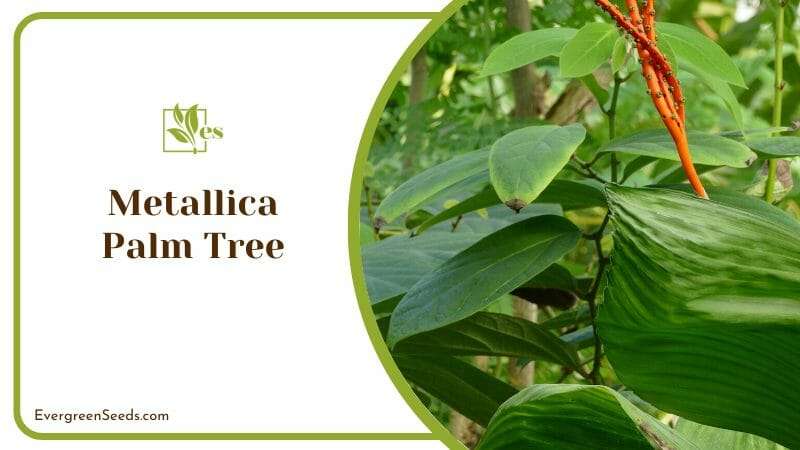
The stems are around fifteen inches long, while the leaves are approximately thirty inches long and fifteen inches broad.
– Growth Requirements
It can also withstand low-light conditions, making it ideal for use indoors. It has a solitary slender green trunk with ancient leaf scars around it. This palm is ideal for growing inside because it can be grown from seeds and tolerates low-light conditions.
4. Sterling
Dieffenbachia ‘Sterling’ has enormous magnificent foliage with contrasting white veins that seems hand painted.
– Features
This is a slow-growing houseplant with a maximum height of three feet. Brighter light will assist to preserve the vibrant hues of the Dieffenbachia ‘Sterling.’
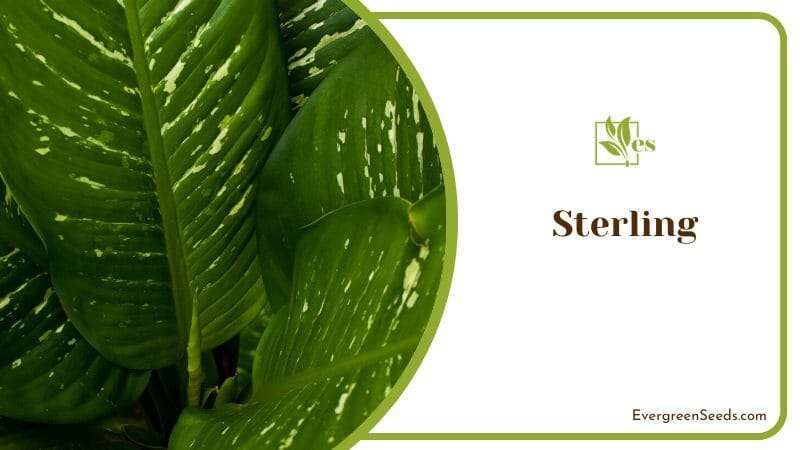
– Growth Requirements
This plant may be used in light indoor settings and on patios. These wonderful plants require no extra care and consideration to watering and short dry seasons are okay for this plant. When the plant’s oldest leaves begin to dangle and become yellow, this is an indicator that it is being kept too dry.
However, this plant would face different types of issues, for example, if you maintain this plant outside, aphids could be a minor issue. This plant’s older leaves turning yellow indicate water and light stress. If you plant it mealybugs can attack this plant, but they can be eradicated with a systemic pesticide drench and as you would apply neem oil.
5. Philodendron Auriculatum
Auriculatum, also known scientifically as Philodendron Auriculatum, is used as a decorative and indoor plant. This plant’s leaves are often huge and imposing, generally lobed or severely cut, and can be pinnate or not.
– Features
They can also be round, spear-shaped, or any of a variety of different shapes. On the stem, the leaves grow alternately. This plant contains juvenile and adult leaves that can seem very dissimilar from one another.
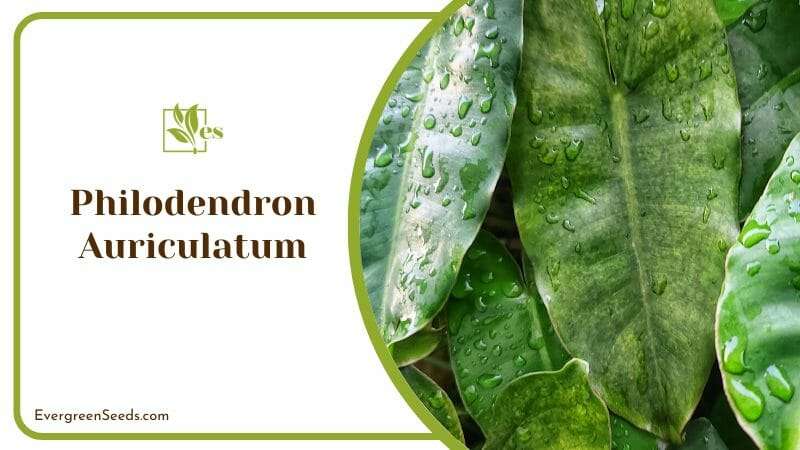
Furthermore, it has aerial roots that would come in a variety of forms and sizes, and they grow from the majority of the tree’s nodes or, on rare occasions, from an internode. The number and size of rhizomes per node are determined by the existence of solid support to which the roots can adhere.
– Growth Requirements
With proper plant care, the berry-like fruits of this plant can be eaten without worrying about the toxicity of the fruits. Ideally, they must be placed in a location where the temperature ranges between 70 and 80 degrees Fahrenheit, as the sun would also shine directly on them so that they would have energy to grow.
6. Giant White Bird of Paradise
Strelitzia Nicolai sometimes referred to as the Giant White Bird of Paradise, because of the significance that the blooms would draw.
– Features
Note that this is a type of banana-like plant with upright woody stems that may reach a height of around twenty-five feet and clusters that can extend up to eleven feet. The six-foot-long grey-green leaves are arranged in a circle at the tip of the stems.
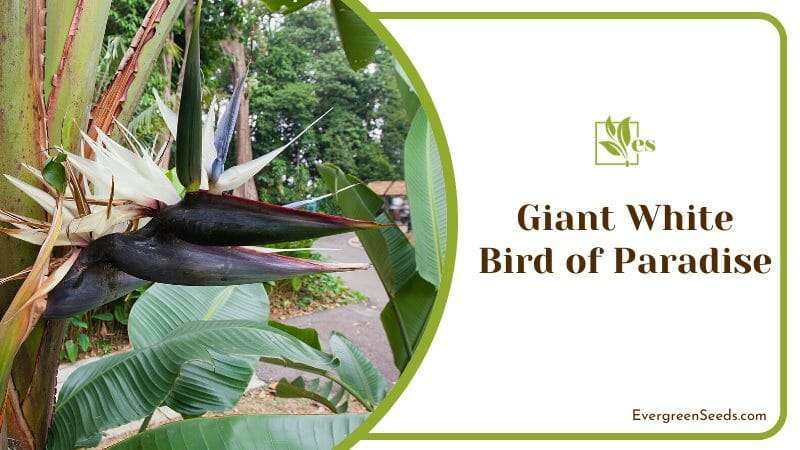
A bright blue bract, white petals, and a dark red tongue make up the inflorescence. The whole bloom may grow to be as tall as seven inches and as long as a foot and a half, and it is usually kept just above the spot in which the leaf fan arises from the stem. Furthermore, triangular seed capsules accompany the blooms.
– Growth Requirements
It requires rich, wet soils with proper drainage in full to part shade, but it can withstand light and cold. Moreover, these greens need to be placed in an area that has high levels of humidity and warmth. To achieve the right humidity, you can mist the plant, or you can also install a humidifier near it.
7. Red False Banana
The red false banana is a Musaceae family perennial cultivar. It grows warm season, with some shade during the hottest part of the day.
– Features
Its trunk is known as a stem, which means it embodies a stalk. The leaves formed along the stem are long and wide. On another note, the foliage, which ranges in color from greenish to purple to crimson, is the plant’s center point.
It has enormous olive green paddle-shaped leaves that may reach a height of up to twenty feet and a breadth of four feet.
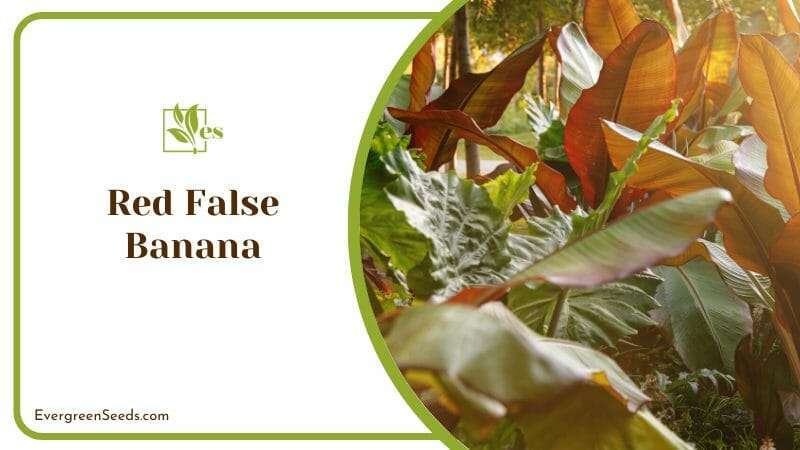
– Growth Requirements
The red false banana will thrive when it sees full to shady sunlight, as long as the full sun isn’t harsh and won’t burn the leaves. Moreover, it also requires soil that is has draining properties, which won’t let the irrigated water sit at the bottom.
The red false plant requires moist soil; however, it should not be overwatered. However, it must be placed in an area where it is protected from high gusts, which might harm the leaves. This plant thrives in patios, atriums, and walled gardens. It thrives in USDA tree hardiness zones 10b, 10a, 11b, and 11a.
8. Cigar Calathea
Calathea Lutea, commonly known as Cuban cigar or cigar calathea, is a well-known, low-maintenance houseplant.
– Feature
Its leaves are typically purple on the underside, fold up throughout the night, and unfold in quest of the dawn sun in the morning. Nonetheless, the leaves are frequently huge and colorfully patterned, with vivid hues such as orange, pink, white, and red. Laslty, it has large leaves and waxy red blooms.
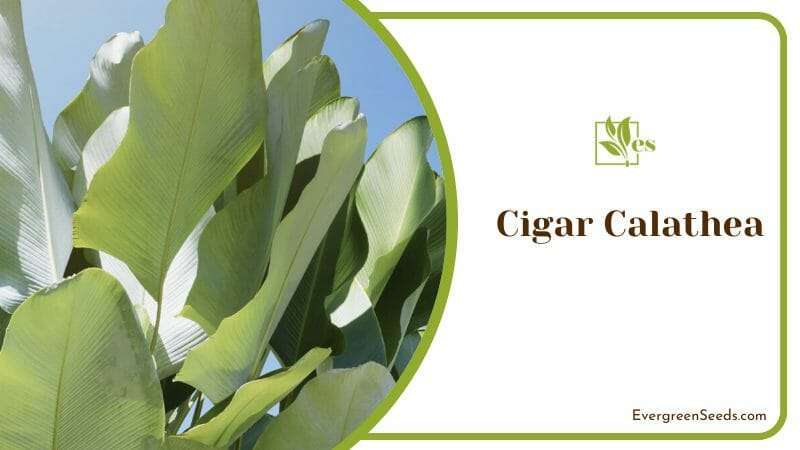
– Growth Requirements
Cigar Calathea must be cultivated in fine-fertilized soil that is potted. You may create a fertilized mixture with coconut fiber or coco peat moss, perlite or vermiculite, composites, and other components.
This plant requires a type of soil that not only drains well but also is lightweight, retains water, and allows thriving of roots. This plant prefers either moderate or complete shade, as you must water it only when the soil seems dry to the touch, and avoid over-watering. It enjoys indirect illumination and grows best in a shaded environment.
9. Dumbcane
The Dumbcane is primarily cultivated as a houseplant, and it requires a certain growing condition to thrive.
– Features
The leaves are another trait that gives it the appearance of a banana tree. This plant’s leaves are alternating, simple, big, and speckled with white, yellow, and various colors of green. Their form is rectangular to oval-shaped, cuneate, rotund to a cordate, whole, medium green with ivory white spots or patterns, and petiole sheathing.
This tree has an exotic appearance and beautifully curved leaves with cream, yellow, and white brush strokes that emphasize the form of the leaves.
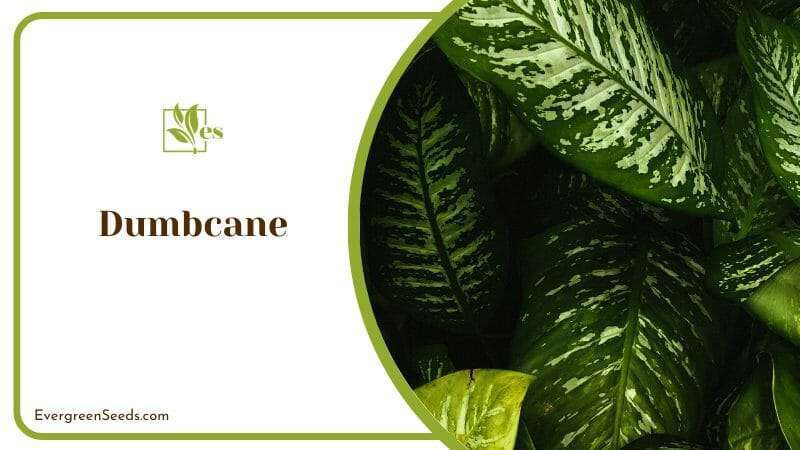
– Growth Requirements
For the ideal growth, it requires, moderate brightness and moderate interior temperatures. The rich tone of green combined with the line drawings of color makes this plant stand out and demand to be noticed in your decor.
When you are cultivating it in your house, whether indoors or outdoors, you must keep in mind that it is a harmful poisonous to pets and children. Which means that when anyone ingests it accidentally they would be intoxicated, hence you must be mindful about this.
10. Leopard Lily
The Leopard Lily or Dieffenbachia Amoena is also known as Banana Leaf Plant. It is an upright, leafy evergreen perennial native to South and Central America in the Araceae family. It gets its common name from the negative effects it has on the vocal cords when consumed.
– Features
The key reason why this plant is popular is because of the enormous variegated leaves have stunning cream and yellow patterning that resemble leopard spots, according to some people.
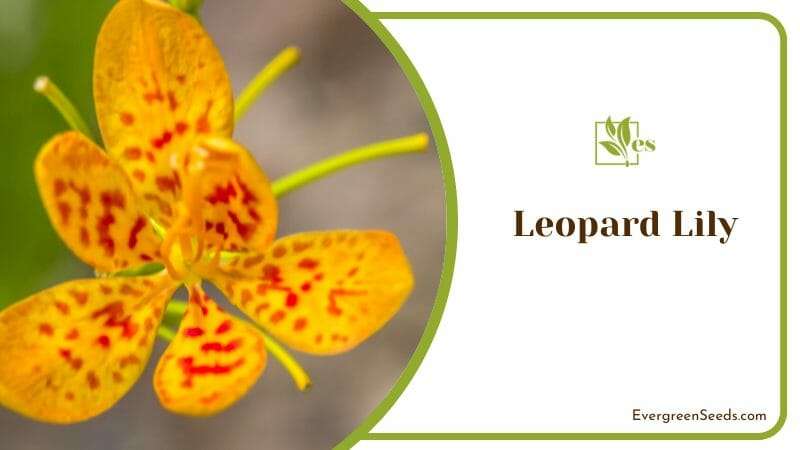
It has huge, oblong leaves with cream or yellow spots and stripes, as well as vibrant green lines and bands along the outside border.
– Growth Requirements
You have to cultivate it in loose, rich, high-organic soil with indirect sunshine and high humidity. Furthermore, to prevent root rot, you should water the plant well, then let the top one inch of soil fully dry before watering again.
In addition, the leopard lily would spread by split or stem cutting, as it would only blossom once in a while, but when it does, the blossoms are green spadix.
11. Ruffled Fan Palm
The Ruffled Fan Palm or Licuala Grandis has a costal spans about one-third of the span of the leaf surface and have three orders of inflorescences that reach beyond the leaves.
– Features
The fan palm has single, vertical stems approximately ten feet tall and two inches in diameter, which are ridged with leaf scars and some remaining fibers from leaf sheaths. The foliage is costapalmate, including a rigid, wavy blade that is undivided but corrugated and shaped like a semicircle.
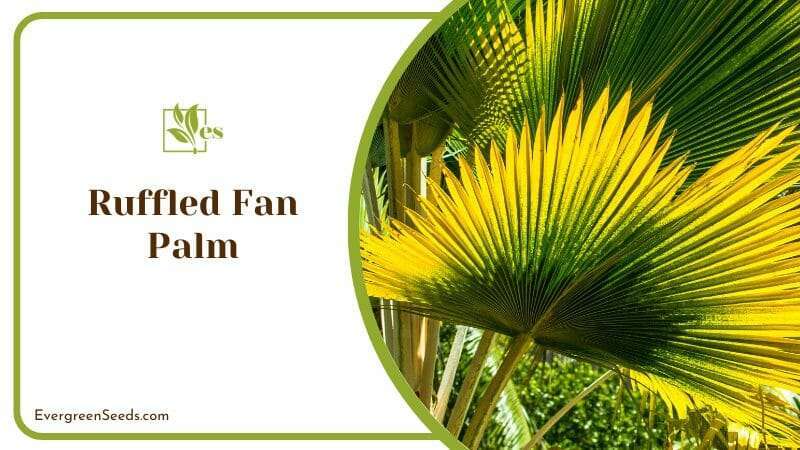
The leaf surfaces of this plant exhibit a rich green color. This plant’s petiole has a large hastula and is equipped with tiny, curving teeth anywhere along fibrous borders. When ripe, the blooms are tiny and white, while the fruits are small, spherical, and crimson or red-orange.
– Growth Requirements
These plants would require some shades to full sun as you would also have to make sure that the soil remains moist so that the roots would develop and grow stronger. Make sure that the soil does not accumulate water, on the contrary, it should be a well draining one.
12. Hardy Banana Plant
The Hardy Banana Plant, also known as Musa Basjoo, is a tropical-looking, fast-growing herbaceous perennial.
– Features
It features massive, paddle-shaped, brilliant green foliage that spans from the pseudo-stem. These plants grow bananas just like the common banana plants but the bananas both look different and are not eatable.
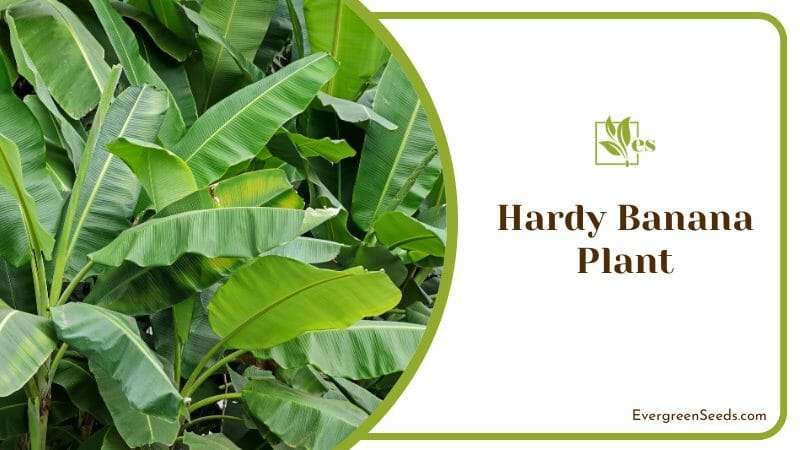
During the summer, clusters of white or golden tubular blooms develop, and they are accompanied by small decorative fruits.
– Growth Requirements
It is evergreen in warmer areas, but it is admired for its tropical leaves and attractive blossoms wherever it is grown. This tree is native to the Chinese province of Sichuan. The Hardy Banana Plant loves wet, well-drained, nutrient, or loam soils and full sunlight to light shade.
13. Dwarf Banana Tree
The Dwarf Banana Tree, scientifically known as Musa Acuminata, is a popular cultivar. The term refers to the length of the pseudostem rather than the fruit. The leaves of young plants contain red or purple spots that fade fast as they grow.
– Features
It is the most widely cultivated banana variety and the primary source of commercialized bananas. The leaves of Dwarf Cavendish are wide and have short petioles.
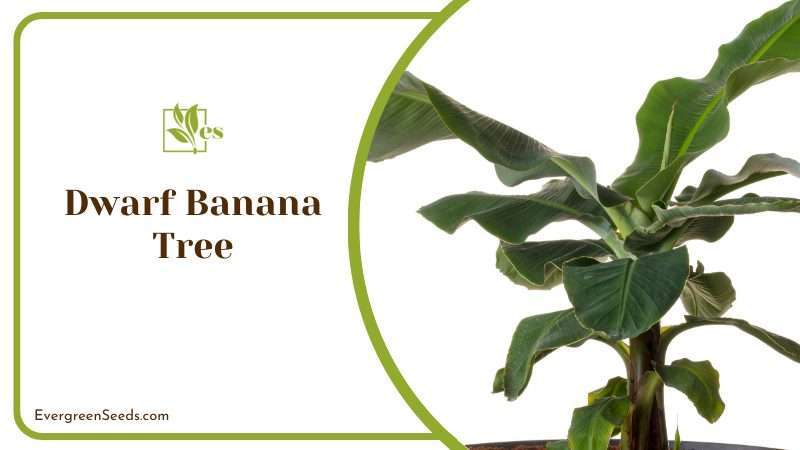
The fruit of the Dwarf Banana Tree varies in size from six inches to one foot, has thin skin, and can yield up to ninety fingers per plant.
– Growth Requirements
This beautiful plant is a low stature one and this is what makes it sturdy, wind-resistant, and easy to care for, and it grows quickly. This makes it perfect for farming, where the weather should be between 70 and 80 degrees Fahrenheit.
As the soil should be one that is well-draining one that is mixed with some sand, and you should water it about two inches per week.


